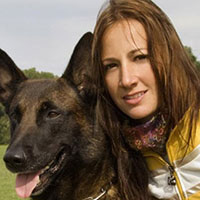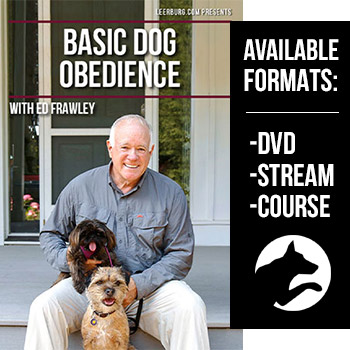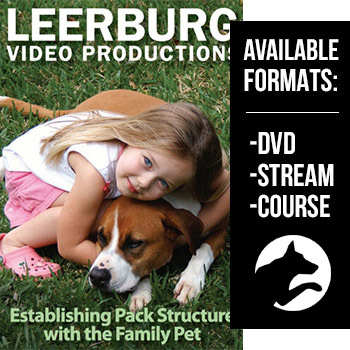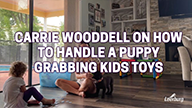Dog Growls and What They Mean For Your Child

One of the scariest moments a new parent can experience is their beloved family dog growling at their baby. It can trigger feelings of anxiety, stress, and thoughts of having to rehome the dog. You may already be having these thoughts and feel guilty about it.
First thing's first, your dog needs your help. Growling is a form of communication for dogs. Different types can tell you what your dog is feeling and how to help. The fact that your dog is trying to communicate its needs before taking action should be reassuring.
3 Different Types of Growls
Let's talk about a few different types of growls and how to differentiate them.
1. Play Growl
If you've ever watched your dog play with other dogs, you've probably already heard a play growl. This type of growl takes place in a playful state of mind, usually during the roughhousing and mock-fighting that makes up dogs' typical play behavior.
However, even though this means your dog is not being aggressive toward your baby, we still don't want your dog to see them as a littermate or playmate. The type of play dogs engage in with each other can contain behaviors such as nipping, mouthing, and physical contact that isn't safe or appropriate for human play, particularly children. If your dog is play-growling while playing with your child, the best course of action is to monitor and rein in the play before it gets too rowdy. Keep interactions calm and positive, and choose interactive activities such as playing fetch instead of physical play.
2. Warning Growl
This is where we get into more serious growls. Generally, the two states of mind associated with threatening growls are defensiveness and aggression. Importantly, a warning growl when a dog feels threatened can easily escalate into a nip if ignored, which is why we don't want to correct it and eliminate our warning sign. Personal space and resources are common boundaries that dogs can feel threatened over. Don't let your child harass or annoy your dog, even if it seems tolerant at first. Like people, dogs have thresholds, and an accumulation of stressors can cause them to resort to defensive behavior to enforce their boundaries. We don't want our dogs to feel they can correct our children; however, this means we have to step up and take that responsibility ourselves.
3. Controlling Growl
The issue arises when we have a dog growling in a controlling manner. This is not a dog that feels defensive or helpless or has had thresholds pushed. It is a dog who genuinely wishes to control the child within the environment and is confident in its ability to win an ensuing battle if necessary. Make no mistake; this is a serious situation that requires immediate intervention.
Creating a Safe Training Plan
Separating your child and dog until a training plan is implemented is the first step toward success. Your dog needs help understanding new coping behaviors and household management. We cover these techniques in the Dogs to Diapers course and will help you devise a game plan to give your dog the jobs and roles they need to succeed at home.
Dogs to Diapers will help you learn to recognize your dog's stressors and triggers and work to maintain the boundaries they need. Your baby and dog can have positive interactions, but it may not necessarily be how you envisioned. Give your dog their own spaces, time, and plenty of breed-appropriate mental and physical stimulation, and you're on your way to a healthy relationship between your dog and child.









Ask Cindy.